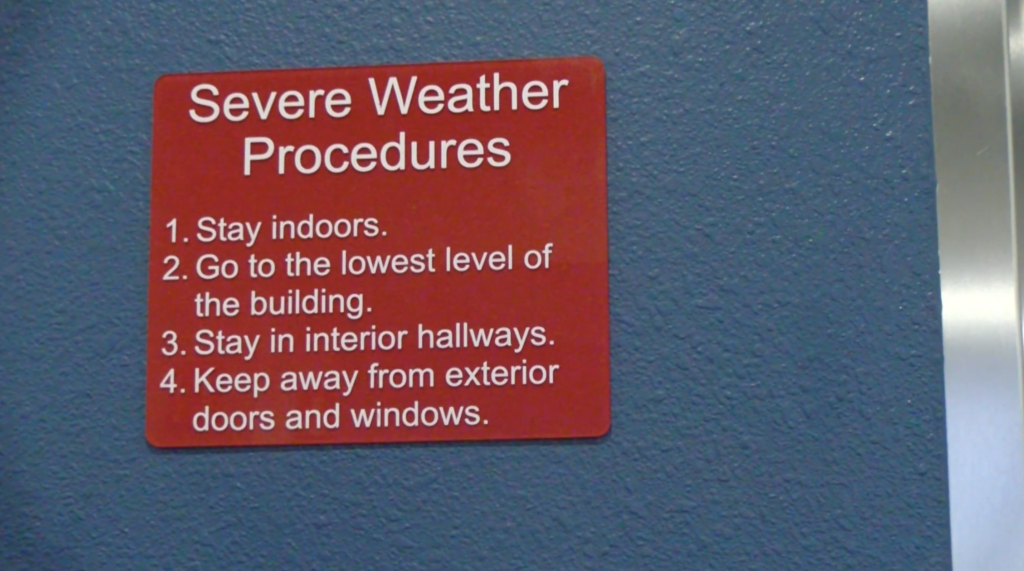If you’re new to Kansas or the Midwest, you may not have experienced a tornado warning before. It can be frightening to hear the sirens for the first time and not know what to do. It’s important to be prepared and consider what to do ahead of a tornado warning.
Ashley Updike | aupdike26@ku.edu
First, have a plan where your storm shelter will be before the sirens are already going off. If you’re at home, your safest shelter will be on the lowest floor of your building, away from windows to avoid getting hit by any broken glass. If you are unable to get to the lowest floor of your dorm or apartment building, go to an interior room such as a bathroom or closet, and cover yourself with a heavy blanket or mattress if possible.

KU Housing complex directors have prepared for the spring storm season and assure students that the staff is ready to help in the event of severe weather.
“If there is an active warning, we actually have an emergency management system in the community and it will come over all of our intercoms in the buildings, and it will say that there’s an active tornado warning,” Downs Hall Complex Director Haley Doze said.
If you happen to be in class, or walking on Jayhawk Boulevard when the tornado sirens go off, KU Emergency Management recommends going straight to the lowest level of one of the libraries, Strong Hall, Wescoe Hall or the student union.
“The beautiful part about being on a college campus, we have a lot of old buildings that are constructed very well. So if you can get to the lowest level of any of those buildings away from windows, you are likely to be OK,” Associate Director of Emergency Management Matt Matheis said.
There are currently no public storm shelters in Lawrence. The only Federal Emergency Management Agency (FEMA) rated tornado shelter in our area happens to be on the west side of KU’s campus in the School of Pharmacy building.
“In the event of a tornado warning, the locks actually disengage and you’re actually able to enter that building and go to the basement, and that is the only one here on campus,” Matheis said.
It is recommended that students download multiple weather apps and sign up for alerts through multiple severe weather alert systems. These notifications can be sent straight to your phone, which is very convenient for students who tend to have their phone on them at all times.
“It is always recommended to have multiple ways to get alerts, so I really recommend people sign up for the Douglas County Emergency Management System,” Doze said.
Students can also follow the KU Police Department’s social media pages to stay up to date on severe weather in the area.
